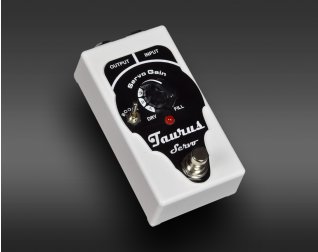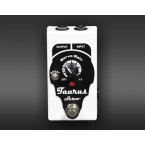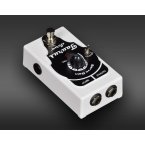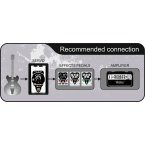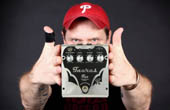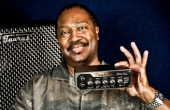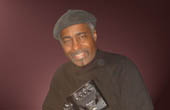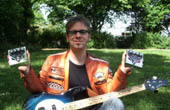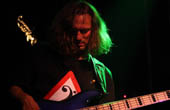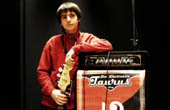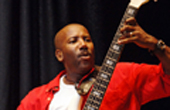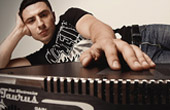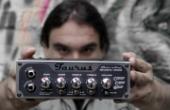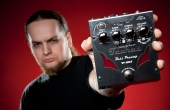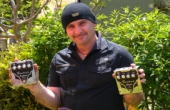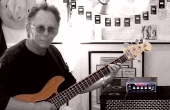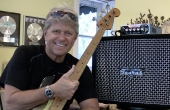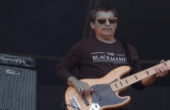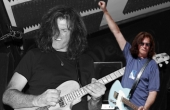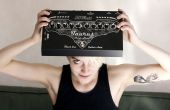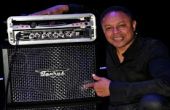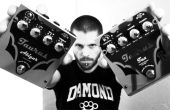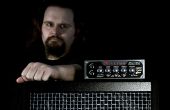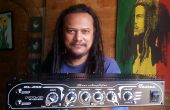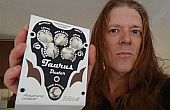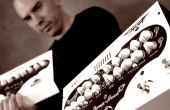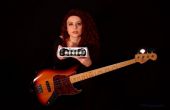The most frequently repeated query is: What exactly is Servo? Is this a preamp? Buffer? Booster? Maximizer?
Afterburner? etc... What kind of effect could it be compared to?
We do not want to refer directly to other devices because they have nothing to do with SERVO. So let this be our
definition of this effect.
SERVO is difficult to compare with other effects because it works differently than generally known effects.
SERVO does not change the guitar sound properties. It is equipped only with one SERVO GAIN regulation knob, which
saturates the sound. The rest remains unchanged.
This means that if a musician already has "His sound" or “His tone”, the servo does not interfere with its general
characteristics, but very gently complements it.
The sound becomes more saturated , brighter, resonates better with much better sustain, therefor the playing is
much easier and more pleasant.
The name SERVO is not accidental - It is a unit which is always on and unnoticed until it stops working. For
example, the power-steering servo in a vehicle is always functioning. To turn the steering wheel is easy. If the
servo fails or isn’t functional, it is difficult to turn the steering wheel. The most noticeable thing is when the
SERVO stops working.
This is the same in the case of our Servo effect. Check out what happens to the sound after switching off the SERVO
on this video presentation: check here.
The BOOST switch gives a slighty higher ceiling in volume and saturation.
You will also notice a bit more aggressiveness or grit in the character of your sound.
The GAIN knob adjusts the saturation while the Boost switch is engaged.
The SERVO works best with CLEAN and CRUNCH type sounds and does not contribute as much to heavily distorted or
overdriven sounds. In this case, the role boils down to complementing the sound quality. If you use the CLEAN and
CRUNCH sounds, you will also feel the SERVO action under your fingers.
Based on musicians opinions, you can also draw some conclusions as to the role of SERVO. Read more.
The most frequently repeated query is: What exactly is Servo? Is this a preamp? Buffer? Booster? Maximizer? Afterburner? etc... What kind of effect could it be compared to?
We do not want to refer directly to other devices because they have nothing to do with SERVO. So let this be our definition of this effect. SERVO is difficult to compare with other effects because it works differently than generally known effects.
SERVO does not change the guitar sound properties. It is equipped only with one SERVO GAIN regulation knob, which saturates the sound. The rest remains unchanged.This means that if a musician already has "His sound" or “His tone”, the servo does not interfere with its general characteristics, but very gently complements it.
The sound becomes more saturated , brighter, resonates better with much better sustain, therefor the playing is much easier and more pleasant.
The name SERVO is not accidental - It is a unit which is always on and unnoticed until it stops working. For example, the power-steering servo in a vehicle is always functioning. To turn the steering wheel is easy. If the servo fails or isn’t functional, it is difficult to turn the steering wheel. The most noticeable thing is when the SERVO stops working. This is the same in the case of our Servo effect. Check out what happens to the sound after switching off the SERVO on this video presentation: check here.
The BOOST switch gives a slighty higher ceiling in volume and saturation. You will also notice a bit more aggressiveness or grit in the character of your sound. The GAIN knob adjusts the saturation while the Boost switch is engaged. The SERVO works best with CLEAN and CRUNCH type sounds and does not contribute as much to heavily distorted or overdriven sounds. In this case, the role boils down to complementing the sound quality. If you use the CLEAN and CRUNCH sounds, you will also feel the SERVO action under your fingers. Based on musicians opinions, you can also draw some conclusions as to the role of SERVO. Read more.

 Polski
Polski


